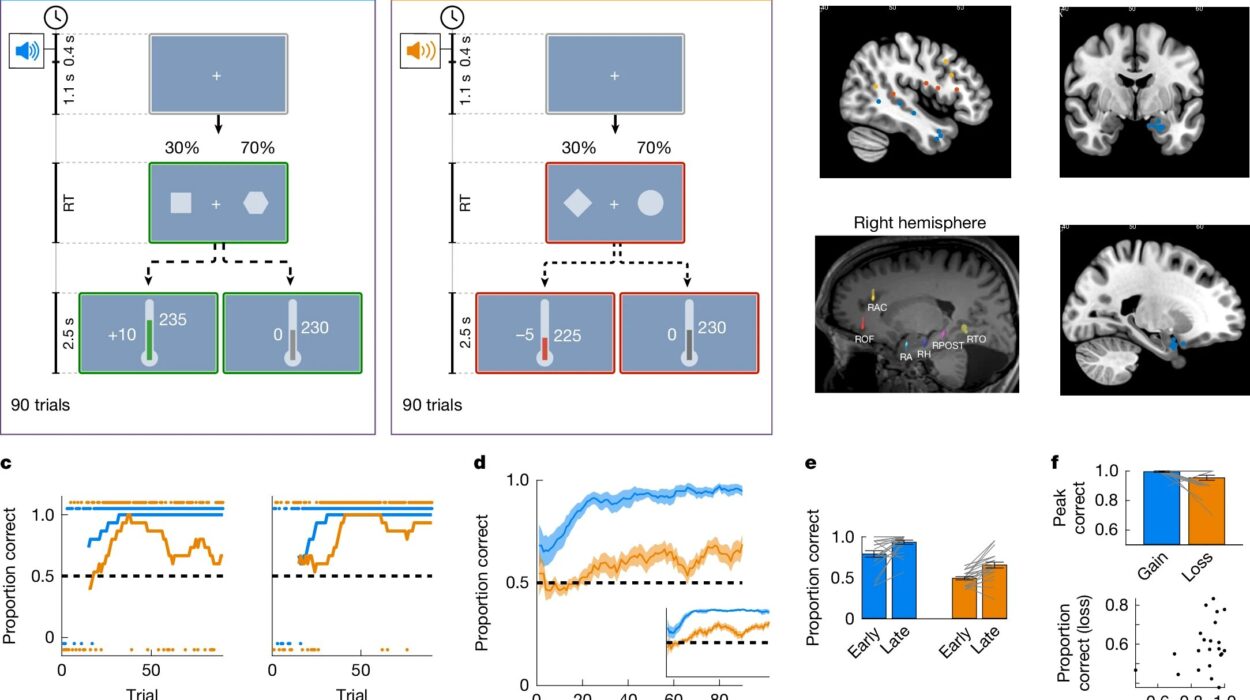It’s a behavior so common that it’s become a cliché: a man glances—or sometimes blatantly stares—at a woman’s breasts. From movies to memes, this phenomenon has long been the subject of comedy, critique, and curiosity. But behind the cultural jokes and awkward social moments lies a much deeper and more fascinating question: Why are men so drawn to breasts?
The answer isn’t as straightforward as “because they’re sexy.” In fact, the roots of breast attraction lie at the intersection of biology, psychology, culture, and evolution. It’s a phenomenon that has puzzled anthropologists and neuroscientists alike, leading to decades of research into what might drive this near-universal male fixation. Is it hardwired in our brains, sculpted by culture, or something more primal? Are breasts truly unique among sexual traits in the animal kingdom—and if so, why?
In this article, we’ll embark on a detailed exploration of the science behind breast attraction. We’ll examine evolutionary theories, delve into neuroscience and hormonal triggers, untangle the role of culture and media, and consider what female perspectives and feminist thought bring to the conversation. This is not a shallow look at a superficial habit—it’s a deep dive into human desire, evolution, and the surprising power of visual cues.
The Evolutionary Riddle: Why Do Humans Have Permanent Breasts?
To understand why men stare at breasts, we first need to understand why human females have such conspicuous breasts in the first place. This question alone baffles biologists. Among primates, human females are uniquely endowed. While chimpanzees and gorillas have flat chests when not lactating, women develop permanent breast tissue during puberty, long before motherhood.
This fact poses a curious evolutionary puzzle. According to Darwinian logic, traits that evolve and persist must serve a reproductive purpose. If permanent breasts aren’t necessary for milk production (which they aren’t), then why are they there? And why do they stick around even when a woman isn’t pregnant or nursing?
One of the earliest and most popular evolutionary explanations comes from British anthropologist Desmond Morris, who argued in his 1967 book The Naked Ape that breasts evolved as sexual signals—specifically as visual analogs to buttocks. In early hominids, sex typically occurred from behind, but as humans evolved face-to-face mating, Morris proposed that breasts evolved to mimic the rounded shape of buttocks to attract male attention.
Though this theory is now considered somewhat simplistic, it paved the way for a broader idea: that breasts evolved not only as milk machines but as tools of sexual communication.
Sexual Selection and Visual Signals
The theory of sexual selection, first proposed by Charles Darwin, suggests that certain traits evolve because they are attractive to potential mates—even if they don’t have a direct survival advantage. In this light, breasts may have become sexually selected traits: physical features that men found attractive, and therefore contributed to reproductive success.
Much like a peacock’s tail or a lion’s mane, human breasts could have become exaggerated over evolutionary time due to male preference. The more pronounced the breasts, the more attention they attracted, increasing the likelihood of successful mating.
But why would men evolve a preference for breasts in the first place?
One theory is that breasts may serve as a signal of reproductive health and fertility. Symmetrical, firm, and proportionally sized breasts may subconsciously indicate youth, hormonal health, and fat reserves—important factors for bearing and nursing offspring in ancestral environments.
This doesn’t mean men consciously interpret breasts as fertility cues, but rather that evolution may have tuned the male brain to respond to such cues with attraction. Just as we find babies cute because of their round heads and big eyes—traits that stimulate caregiving behavior—so too might men find breasts attractive because their shape unconsciously signifies reproductive readiness.
The Brain on Breasts: Neuroscience of Visual Pleasure
But the evolutionary logic is only part of the story. To understand why men stare, we have to go inside the male brain.
Neuroscientific studies have shown that the male brain is highly visually oriented, especially when it comes to sexual stimuli. MRI scans reveal that when men look at images of attractive women, their reward centers light up, including the nucleus accumbens, amygdala, and dopaminergic pathways—the same areas activated by drugs, food, and other forms of pleasure.
Breasts, being highly visible and sexually salient, act like visual beacons, triggering these pleasure pathways. The brain releases dopamine, the feel-good neurotransmitter, reinforcing the desire to look again. This creates a feedback loop—look, feel good, repeat.
There’s also evidence that the male brain is wired to detect curvaceous body shapes. A 2010 study using eye-tracking technology found that men spend more time looking at the waist-to-hip ratio and chest area of women, even when consciously trying not to. Women with a waist-to-hip ratio of about 0.7 are consistently rated as more attractive, and prominent breasts exaggerate this ratio visually, drawing more attention.
This response is largely automatic. It occurs before conscious awareness and involves parts of the brain responsible for instinct and survival—not just thought and judgment.
Hormones and Bonding: Is There a Breast-Feeding Connection?
Another compelling theory connects the male fascination with breasts to the hormonal chemistry of bonding. During breastfeeding, when a baby suckles at the mother’s nipple, the hormone oxytocin is released in both the mother and the child. Oxytocin is often called the “love hormone” because it strengthens emotional bonds.
Some evolutionary psychologists have proposed that the sexualization of breasts may hijack this bonding mechanism. In other words, nipple stimulation during sexual activity may help form pair bonds between adults, increasing the likelihood of long-term cooperation in raising children.
This would give an evolutionary advantage to males who were attracted to breasts, since their interest would lead to behaviors that promoted bonding and reproductive success.
Support for this idea comes from studies showing that nipple stimulation during sex triggers oxytocin release in women and increases their likelihood of orgasm. Some researchers suggest that this erotic sensitivity may have evolved precisely because it encourages affectionate, bonding behaviors between sexual partners.
The Cultural Layer: Breasts and Symbolism
While biology lays the groundwork, culture builds the house. In many modern societies, breasts are hyper-sexualized, constantly on display in advertising, film, fashion, and pornography. This media environment amplifies male attention and trains the brain to associate breasts with desire, status, and beauty.
But it hasn’t always been this way.
Anthropological studies show that in some cultures, breasts are not sexualized at all. Among certain indigenous groups in Africa, for instance, women traditionally go topless, and men do not show the same fixation. In these societies, breasts are seen as functional, not erotic.
This suggests that while biological tendencies may exist, culture determines how they are expressed. The Western obsession with cleavage, bras, and breast augmentation is shaped by media, social norms, and even capitalism. Breasts have become commodities in the beauty industry and symbols of femininity and sexual value.
Fashion also plays a role. From the corsets of the Victorian era to the push-up bras of the 20th century, clothing has accentuated breasts, reinforcing their sexual significance. These aesthetic choices feed back into male perception, further fueling attraction and attention.
Feminist Perspectives: Objectification and Power
The phenomenon of men staring at women’s breasts isn’t just a biological quirk—it has social consequences. Feminist scholars have long critiqued how this behavior contributes to the objectification of women, reducing them to body parts rather than whole people.
Psychological research supports this concern. Studies show that when men focus on women’s bodies—especially isolated body parts like breasts or legs—they are more likely to dehumanize those women, perceiving them less as agents and more as objects. This dehumanization can lead to disrespectful behavior, sexual harassment, and unequal treatment.
However, some feminists argue that breast attraction in itself is not the problem—it’s the social context in which it occurs. In a society that rewards women primarily for their appearance, breast fixation becomes a form of control or limitation, rather than a mutual expression of sexuality.
Others embrace body positivity, reclaiming breasts as sources of power, pleasure, and pride. From topless protests to “free the nipple” movements, women are challenging the idea that breasts exist solely for male pleasure.
Individual Differences: It’s Not Just About Breasts
It’s important to note that not all men are equally obsessed with breasts. Sexual preferences are diverse and shaped by many factors, including personal experience, personality, and even prenatal hormone exposure.
Some men are more drawn to legs, faces, voices, or personalities than to breasts. Others report finding small or flat chests more attractive than large ones. Still others are more oriented toward emotional or intellectual attraction. Human desire is wonderfully varied and doesn’t reduce to one body part.
Moreover, women also look at breasts—sometimes to compare, sometimes to admire, and sometimes as part of their own sexual attraction. The gaze is not solely male, nor is breast attraction limited to heterosexual relationships. Lesbian and bisexual women, too, often find breasts erotic, though the underlying dynamics may differ.
From Biology to Meaning: What Do Breasts Really Represent?
So why do men stare? The simplest answer might be that breasts are visually compelling signals that combine biology, pleasure, and symbolism. They speak to ancient evolutionary scripts, stimulate pleasure centers in the brain, and carry layers of meaning shaped by culture and personal experience.
For some, breasts represent nurturance and safety. For others, they are icons of eroticism. They can signal fertility, youth, sexuality, or power. Sometimes, they simply captivate attention because of symmetry, softness, or movement.
At the end of the day, the act of staring is not just about anatomy—it’s about the human tendency to seek meaning, connection, and beauty in the bodies of others. Breasts, by virtue of their visibility and complexity, become focal points in this search.
Conclusion: The Gaze, Reconsidered
To understand why men stare at breasts is to understand something much deeper about human nature. It reveals how evolution has sculpted our bodies and our brains, how culture amplifies certain desires, and how visual cues serve as powerful communication tools in the dance of attraction.
Breast attraction is not merely a habit or a flaw—it’s a complex phenomenon rooted in biology, shaped by hormones, magnified by media, and refracted through individual psychology. It can be a source of beauty, bonding, or objectification, depending on the context and the consciousness behind the gaze.
Perhaps the next time we think about this subject, we can move beyond the superficial joke and see the larger picture: a window into the human condition, where instinct meets intention and biology meets meaning.






